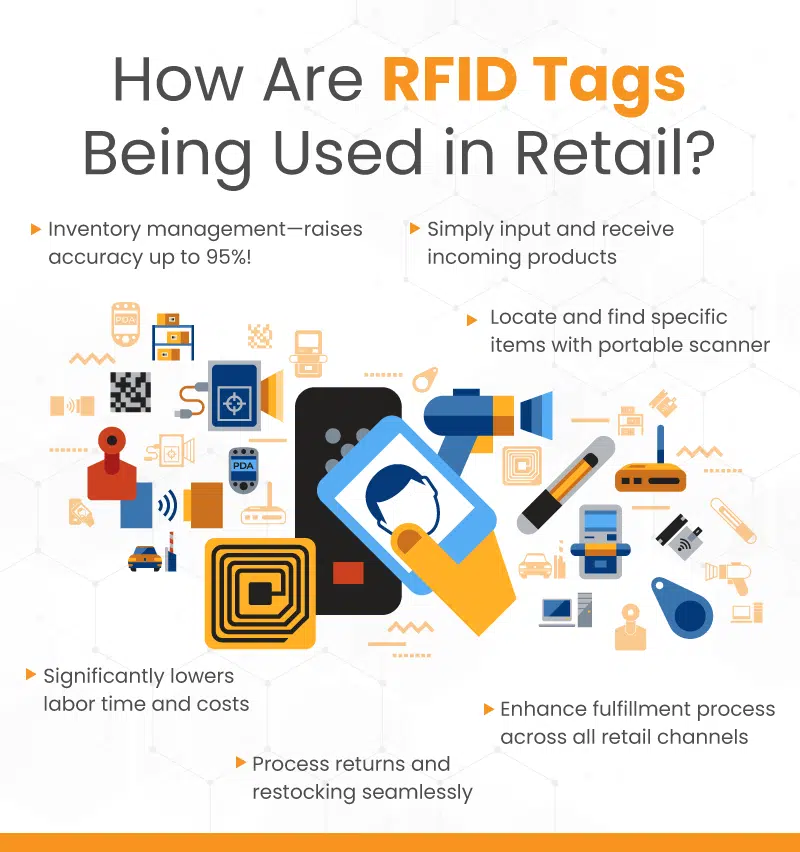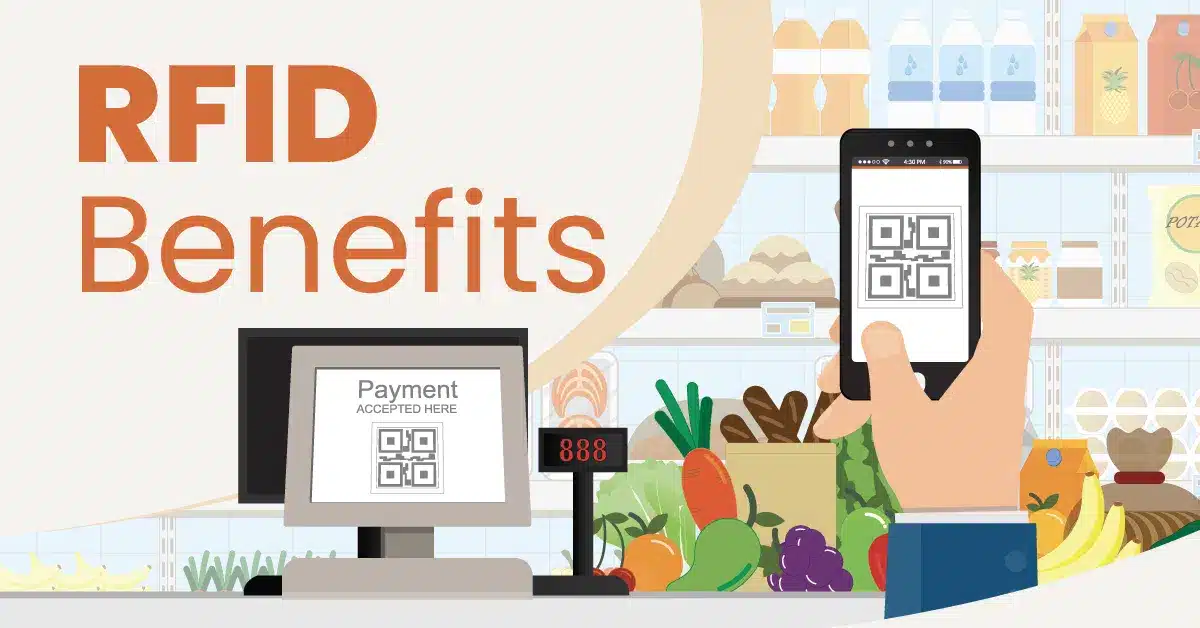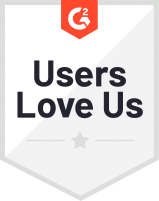All types of retail businesses can benefit from technological advancements. One area of focus has emerged as many retailers move to a more omni-channel model. Such a move requires that they look for ways to streamline and integrate all of their operations. That’s where RFID retail comes in.
RFID is a wireless tracking communication technology. While it’s primarily thought of as an inventory tool, its capabilities touch nearly all aspects of running a retail business. And many enterprise retailers, such as Uniqlo, lululemon, and Target are already well acquainted with its use. But how can small businesses and retailers take advantage of RFID? Here’s a detailed guide about RFID and its retail benefits.
RFID Hardware and Functionality
In many ways, RFID technology is designed to work much like a traditional barcode. The two main components of an RFID system are the tag and the reader. Here’s a bit more info about each of these:
RFID Tags
RFID smart tags vary in size and continue to be made smaller and smaller. They contain information like serial numbers and descriptions and hold tiny radio transmitters that relay that information to readers.
There are also two types of tags: passive and active. Passive tags are typically less expensive and require a much closer scan from an RFID reader. That’s because they don’t contain an internal power source and rely on being powered by the readers themselves. They can relay at a range of about 12 meters.
On the other hand, active RFID tags do contain an internal battery and constantly emit a signal to be picked up by readers. Some of these active tags work up to a 100-meter range, so, unsurprisingly, they’re more costly.
RFID Readers
RFID readers are the devices that scan the tags to transmit data. They come either as fixed or mobile. Fixed readers look like modems. They are the more powerful option and can usually scan a whole warehouse. These readers can also be utilized at the point of sale to count all of the items in a basket at once.
Mobile RFID readers look a bit like a barcode scanner but with a long flat panel facing outwards, similar to a contactless credit card machine. They are less expensive and require no installation. In addition, mobile readers are great for locating items in storage rooms. The readers beep faster when they are closer to a desired item.
RFID Technology In Retail: How Does It Differ From Regular Barcodes?
Although they are used for performing the same functions as barcodes and barcode scanners, RFID systems differ significantly and are an upgrade in almost every way. You can read our full rfid vs. barcodes comparison guide but here are a couple of reasons why:
RFID Doesn’t Require A Direct Line of Sight
Unlike traditional barcode scanners, RFID readers can scan a tag by just being in proximity, without the need for a direct line of sight. In other words, you can scan multiple tags at the same time just by grazing over a box of items in your store room. This saves considerable time, effort, labor, and money.
Pick Up Dozens At Once
Because they respond to a set proximity, RFID scanners can pick up on many tags all at once. If you have different types of items in the same area of the stockroom, an RFID scanner can account for all of those individual items at lightning speed. This also means that in a retail checkout setting, all purchase items can be accounted for almost immediately.
How Are RFID Tags Currently Being Used?
RFID is the natural replacement for many of the functions of the barcode system. In the retail industry today, RFID is used most frequently in inventory management, but there are other common applications, too.

Inventory Management
Many retail businesses have invested in RFID technology in order to increase the accuracy and efficiency of their inventory management. In fact, some studies show that the RFID scans can raise inventory accuracy up to 95%. Faster, more precise readings offer multiple benefits for retailers.
Receiving Incoming Products
RFID technology allows you to easily scan new products into your inventory as they arrive from suppliers. No need to break open boxes and scan individual barcodes. As long as you properly program your reader with the correct sensitivity, you can focus on whatever size shipment you receive.
Finding Items
As previously mentioned, RFID can be used as a type of beacon to locate specific items in a warehouse. Simply program your portable scanner to look for a specific item. As you get closer to that item, your scanner will beep more rapidly until you arrive right on top of it.
Lowering Labor Time and Cost
Eliminating manual entry, removing products, and locating barcodes significantly reduces time and energy resources needed to do stock counts. That means staff can focus on other tasks at hand. This saves business owners ample labor costs.
Returns and Restocking
Processing returns continues to be a pain point for retailers. Some stores have begun using software in conjunction with their RFID technology to help optimize the return process. They simply scan an RFID item into their system, and the software tells them where in the store that item should be returned to in order to maximize organization and sale potential.
Enhanced Fulfillment
Improved accuracy drives so much of the rest of your fulfillment process. An omni-channel retail presence relies greatly on having accurate counts across all of your inventory. As such, if you want to offer shopper options like checking stock numbers online or buy online pick-up in-store, you should opt for RFID tech.

The Future of RFID
The next big impact that RFID will have on retail is in the checkout process. As the technology becomes more precise, affordable, and readily available, it will find its way into point of sale systems across all retail verticals.
Revolutionize Checkout Process
Imagine your customers shopping for items at your business, whether it be clothing at a thrift store or snacks and drinks at a convenience shop. They fill up their basket and approach the checkout counter for self-service. They then simply lower that basket into a fixed RFID reader, and, voila, all of the items are immediately scanned into the system.
At this year’s NRF Conference, we showcased our RFID self-checkout kiosk for our visitors.
Here’s a video showing its look and functionality:
KORONA POS can make this type of checkout a reality. We offer cohesive and seamless integrations with the best readers and information technology systems that deal with interchanging RFID tag data. RFID checkout will help your business in an array of important ways:
- Shorter checkout lines
- Faster and frictionless UX
- Accurate scanning with no unaccounted items
- Enhanced security and theft detection
Beyond Inventory And Checkout
The benefits and bonuses that RFID provides will continue to develop. Eventually, it is likely to influence the whole supply chain system. After all, RFID emits more accurate information in real-time. And in some instances, the capabilities are quite remarkable.
For example, in the cannabis industry, some RFID tags can even relay information about temperature and humidity conditions to producers. Tracking products from their inception in the factory all the way through delivery to the end user will be more accurate, traceable, and cohesive with RFID technology.
Store Layout Optimization
Additionally, RFID proximity triggering will affect how stores are laid out, displays are created, and merchandising is strategized. Eventually, fixed RFID readers will be able to track shopper movements throughout the retail floor. This data will offer retailers insight into consumer habits and store layout effectiveness.
Virtual Stylist
Imagine a fitting room with an LED panel mirror that responds to nearby RFID-tagged items. When you try on a shirt, the screen allows you to virtually change colors or patterns of the article of clothing while suggesting complementary items. This kind of tech is actually already being explored by some enterprise brands in select stores.
Existing Limitations With RFID
As with any emerging technology, there are some current limitations to using RFID. While these challenges will likely be solved in the future, they are worth noting for retailers interested in implementing RFID right now.
RFID Cost
As a newer and more advanced tech, RFID cost more than barcode scanners. Unsurprisingly, RFID tags also cost more than a regular barcode tags. That’s because of the more complex micro components that are held within them.
Consequently, using these tags for lower-cost items, like candy bars or socks, might not make sense for some retailers. Nonetheless, the average tag cost has already come down considerably and will likely be much more affordable soon.
Physical Shields
There are some situations where inventory from back storage areas can “bleed” into sales floors. This can confuse RFID readers when used by employees to track down products or perform stock counts. In these types of circumstances, it might be necessary for retailers to build physical shields, typically of metal material, to block the unintended RFID tag transmitter waves from coming through the walls.
Standardization
To reach its full potential, RFID will require some kind of standardization. Across different countries, industries, technology providers, and retailers, having a system that seamlessly integrates and shares information is a must. Again, it’s in the best interest of RFID-related businesses to make this dream a reality.
KORONA POS is very user-friendly. You can customize the interface to conform to your business needs. Customer Service is in the United States, always accessible, and always awesome. We love that we can fit it into our scale of business and grow with it.
-Darlene P.
KORONA POS and RFID
For now, KORONA POS offers the best available point of sale RFID capabilities on the market. Whether you want to utilize the technology for optimizing inventory management, streamlining your checkout kiosks, or both, we’ve got you covered.
Our in-house technicians are here 24/7 to make sure you have fully functional hardware at your point of sale checkout. Give us a call today to schedule a demo and learn more about what we have to offer!
FAQs: RFID Technology in Retail
In retail, RFID is primarily used for inventory management. Tags can be scanned without the need for a direct line of sight, which speeds up the process considerably. In addition, RFID is increasingly being utilized in the checkout process, where multiple items in a basket are automatically uploaded to kiosk systems.
RFID is used for just about every aspect of inventory. Scanners read tags simply by being in close proximity to them. That means receiving boxes from wholesalers, performing inventory counts, and locating specific items are all made easier and more precise with RFID systems in place.
The pros of RFID are that it is more precise, efficient, and less labor intensive. The cons of RFID are that it is slightly more expensive, and not completely compatible with all software systems. Nonetheless, as technology advances and RFID becomes more readily available, the pros will eventually outweigh the cons by a clear margin.













